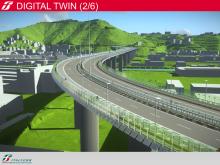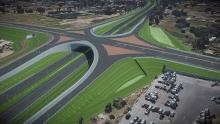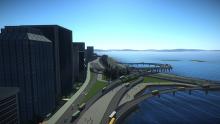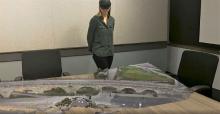A Massive Modernisation Initiative
Located in Cedar Falls, Iowa, University Avenue is a six-lane divided highway supporting more than 20,000 vehicles/day. Built over 60 years ago, the corridor was suffering from deteriorated pavement, a high crash rate, and inefficient traffic operations, as well as lacking pedestrian and bicycle accommodations. To improve roadway conditions and traffic flow, provide non-vehicular access, and spur economic growth, Cedar Falls initiated a US$38.9 million revitalisation. Foth was hired to develop a comprehensive transportation plan for the roadway, from preliminary engineering through final design and construction. Faced with technical, engineering, and coordination challenges—compounded by aggressive timelines and intense public involvement—the organisation required integrated digital applications to meet city and stakeholder demands.
Coordinated Digital Workflows
With 100 members in seven offices working together for over five years, it was important that Foth have the right communication and design applications. Working closely with the city, Foth set out to help it realise the goals using Bentley’s open BIM and reality modeling applications. The team used multiple data acquisition capabilities, including drone and mobile scanning for fast accurate data collection. Collaboration and effective sharing of the models and engineering data were critical to meeting the aggressive schedule and developing a cost-effective design. Bentley’s open applications streamlined workflows and facilitated coordinated design to meet these timelines. The integrated digital platform helped teams remotely manage data and bring consistency in document management and engineering processes, while also providing traceability for design change management to diagnose and remediate issues within hours instead of weeks.
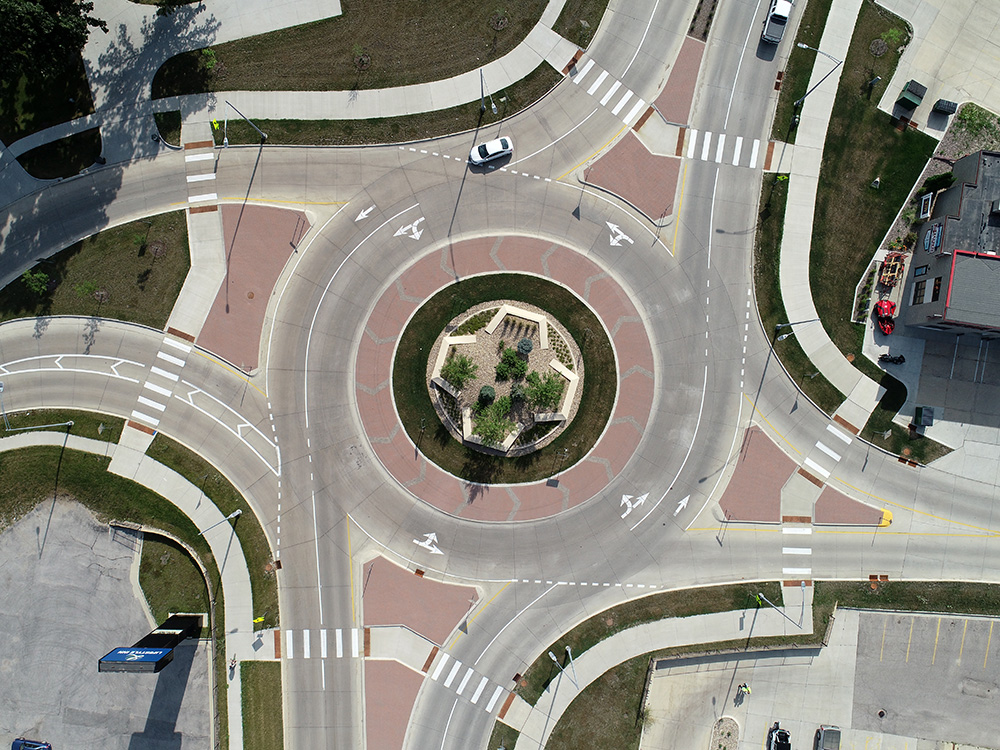 Maximising Model Potential
Maximising Model Potential
Foth created multidiscipline 3D models and analysed numerous design alternatives to deliver a “living street” that strengthened the local economy. Having a single 3D model improved the accuracy and efficiency of the design process, seamlessly integrating designers and consultants from a global network. The model helped the team coordinate with 11 public and private utilities to relocate underground and overhead infrastructure in advance of construction, including adjustments for over 2 miles of major communication facilities. Using the 3D model helped align all parties to identify and visualise clashes while also reducing risk of delays during construction. Foth also extended its digital engineering model to optimise client review and approval processes, public involvement, and construction bidding. The team used LumenRT and MicroStation to create an animated virtual representation of the corridor model. These representations helped Cedar Falls visualise corridor improvements and traffic patterns, demonstrating design intent to ensure project buy-in and approvals.
Digital Solutions Drive Transformation
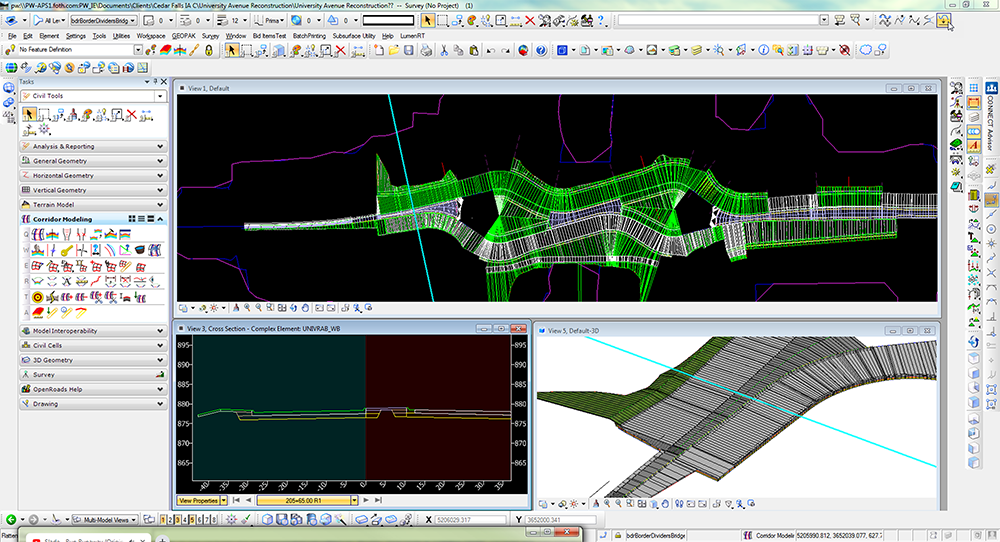 The 3D models and information-rich visualisations facilitated accurate communication of design alternatives to stakeholders and the public to accommodate the aggressive project schedule. Using open applications reduced the design phase by 50%, saving 1,600 hours of design time which enabled construction to begin a full year ahead of schedule. Including the BIM model as part of the bidding documents ultimately resulted in costs at 3% below total contract bid amounts, saving the city more than US$500,000. Foth established the 3D model as a digital twin, with data flowing to and from the model enabling field personnel to quickly identify and resolve potential issues on site. Foth’s safe, efficient, and modern design delivered a return on investment estimated at US$32 million in savings for the community to be realised over the next 25 years.
The 3D models and information-rich visualisations facilitated accurate communication of design alternatives to stakeholders and the public to accommodate the aggressive project schedule. Using open applications reduced the design phase by 50%, saving 1,600 hours of design time which enabled construction to begin a full year ahead of schedule. Including the BIM model as part of the bidding documents ultimately resulted in costs at 3% below total contract bid amounts, saving the city more than US$500,000. Foth established the 3D model as a digital twin, with data flowing to and from the model enabling field personnel to quickly identify and resolve potential issues on site. Foth’s safe, efficient, and modern design delivered a return on investment estimated at US$32 million in savings for the community to be realised over the next 25 years.
Sponsored content produced in association with Bentley Systems

